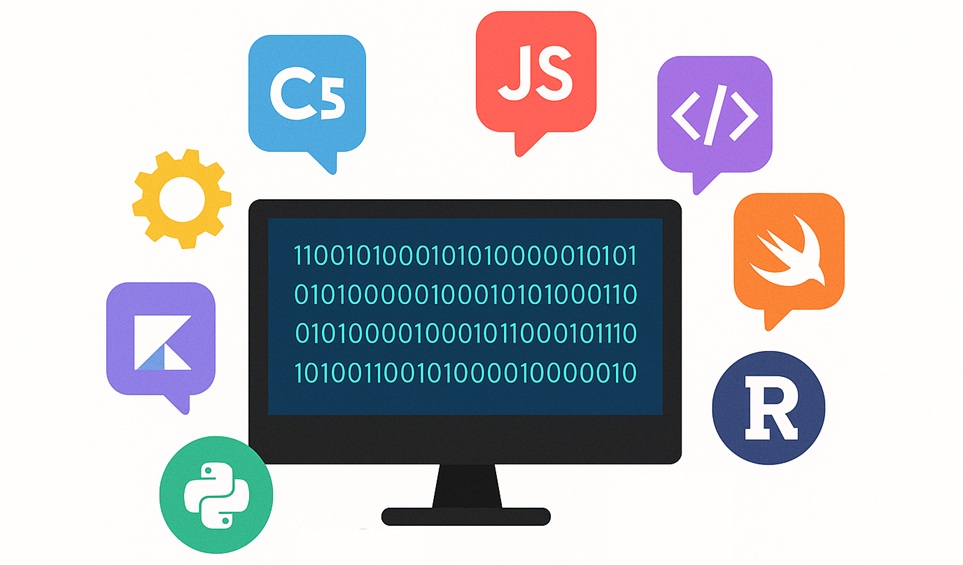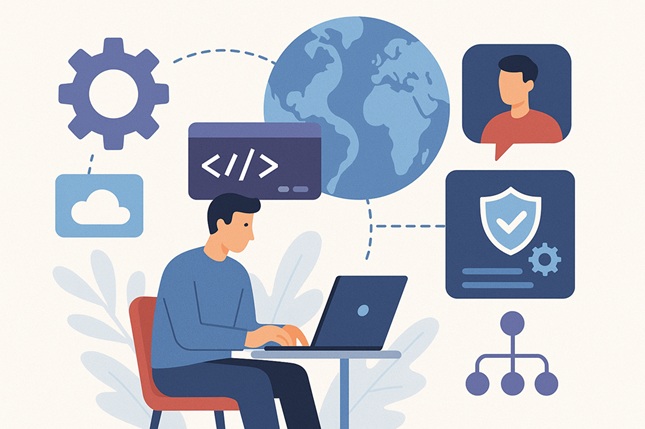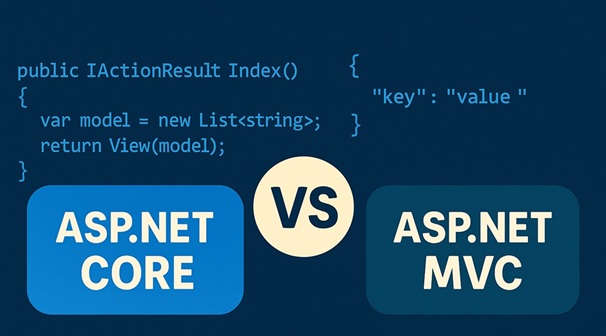Ever feel like managing your shipments is like trying to solve a complex puzzle with missing pieces? In today’s fast-paced business world, moving goods efficiently is key, whether you’re a small online store or a large manufacturing company. That’s where a Transportation Management System (TMS) comes in. Think of it as your logistics superhero, streamlining everything from planning to delivery.
So, what is a transportation management system? It’s a software tool designed to manage and optimize the movement of your goods, making your life easier and your business more efficient. A TMS software logistics solution ensures that your supply chain remains smooth and cost-effective. Let’s get into how this powerful tool can help your logistics.
What a TMS Actually Does
TMS is a single platform that provides comprehensive logistics services to its users. In fact,tracking packages is one aspect of what TMS systems can do, while they can optimize all stages of transportation operations. The system enables immediate data transfer while achieving complete system connectivity between business operations. Your shipping orchestra can run effectively with a TMS logistics software that functions as the main conductor to interconnect all shipping process elements.
Since a TMS is software that automates and optimizes freight transportation processes, it can be helpful for many companies. For instance, businesses that need to move goods but don’t have enough trucks rely on carriers who own trucks and drivers. When a carrier operates a small fleet, they can manage logistics manually using Excel or Google Docs. However, as the number of trucks grows, tracking routes, shipments, and schedules become difficult to navigate through, which leads to errors, delays, and inefficiencies.
TMS solves these challenges by providing real-time visibility into truck locations, routes, shipments, and delivery status. This eliminates the need for constant calls to drivers and allows customers to track their shipments more efficiently. The system also helps plan routes while considering restrictions, such as transporting hazardous materials only on approved roads. Additionally, TMS tracks truck mileage, driver working hours, and operational costs, making logistics more transparent and efficient.
The Toolbox: Features You’ll Love
A well-designed TMS system contains characteristics that simplify the shipping process. Actually, the logistics toolbox concept perfectly describes this system. The system enables you to select the most effective routes as well as pick proper transportation methods including trucking and rail transportation and shipping and allows you to combine shipments for peak effectiveness.
Actually, a TMS can provide you with:
- The real-time shipment tracking capability of TMS transportation software enhances its value by allowing you to select carriers and book shipments.
- The system handles documentation automatically which eliminates the need for paper-based processes.
- The TMS system software can provide analytical reports which help you make better decisions for your operations.
- The use of Internet-of-Things (IoT) devices to beef up various processes across your logistics loop. Smart sensors and meters can significantly advance the performance of your TMS by collecting data about distance, temperature, vehicle condition, to name but a few. By gathering and analyzing these data, your TMS will be able to provide you with more in-depth decision-making in real time.
How It Works: From Plan to Delivery
So, how does this magic happen?
- It all starts with data integration. Your TMS system software connects with your other systems, like your order management and warehouse software, to share information.
- Then comes the planning stage. You enter your shipment details, and the system analyzes various factors to generate an optimized transportation plan. This is where transportation management system software really shines.
- Next is execution: the TMS handles carrier communication and tracking. After delivery, it helps with payment and analysis.
This is how the TMS transportation management system creates efficiency!
Why You’ll Love a TMS: The Benefits
What’s in it for you? Lots!
- Cost Savings: First off, you’ll save money. Optimized routes and reduced fuel consumption mean lower costs. Automated processes help reduce manual errors and unnecessary expenditures, making your supply chain more cost-effective. Freight auditing and payment automation prevent overcharges and ensure accurate invoicing.
- Time Efficiency: You’ll also save time with automated processes that eliminate repetitive tasks, like booking shipments, managing documentation, and communicating with carriers. With real-time tracking and reporting, you can proactively manage delays and disruptions, ensuring smoother logistics operations.
- Customer Satisfaction: Your customers will be happier with real-time tracking and accurate delivery times. With TMS transportation software, customers receive instant updates on their shipments, allowing for better transparency. Accurate ETAs and reliable deliveries help build trust and customer loyalty.
- Better Decision-Making: And with all the data at your fingertips, you can make better decisions. A TMS provides comprehensive reporting and analytics, giving insights into key performance indicators (KPIs) such as delivery times, cost per shipment, carrier performance, and overall supply chain efficiency. This allows businesses to identify trends, address inefficiencies, and make data-driven decisions to optimize their logistics operations.
- Scalability and Flexibility: A cloud-based TMS software grows with your business. Whether you’re managing a small operation or a global supply chain, a TMS adapts to your changing needs. It allows you to handle multiple transportation modes, carrier networks, and different levels of shipping complexity without the need for extensive system overhauls.
- Regulatory Compliance: A TMS system software also helps businesses stay compliant with industry regulations and standards. Automated documentation ensures that all shipments meet legal requirements, reducing the risk of penalties or delays due to missing paperwork.
- Sustainability and Environmental Impact: With optimized routes and smarter load planning, companies can reduce fuel consumption and carbon emissions, contributing to a more sustainable supply chain. This is especially important for businesses looking to improve their environmental footprint and meet corporate sustainability goals.
These are the reasons many companies use trucking TMS software. The advantages of implementing a transportation management system software go beyond just cost savings—they create an efficient, transparent, and scalable logistics network that supports long-term business success.
Different Flavors: Types of TMS
Multiple TMS systems exist in the market at different capability levels.There are three distinct types of TMS solutions you can purchase:
- Standalone on-premise TMS. It’s a classic version of TMS that your company needs to purchase from a vendor and install across your devices. It's an old, good perpetual license, but updating and scaling it can be challenging. However, it doesn’t necessarily mean your TMS has to be a large complex system. If you just need to aid your drivers with a tool that lets them have all routing and loading information, providing them with a relatable mobile application that navigates via GPS connection can be enough.
- Integrated TMS that operates alongside existing systems. TMS can be integrated with larger logistics software systems as well as other components such as Warehouse Management System (WMS), enterprise resource planning (ERP), order management system (OMS), or rate engines.
- Cloud-based SaaS TMS software with its flexibility features. A SaaS Transportation Management System (TMS) is a cloud-based software solution that helps businesses plan, execute, and optimize the movement of goods. It provides real-time visibility, automation, and analytics for shipping, carrier selection, route optimization, and cost management. Since it's hosted in the cloud, users can access it from anywhere without needing on-premise installations or maintenance. This makes it a flexible, scalable, and cost-effective solution for logistics and supply chain management.
The Good and the Not-So-Good: Pros and Cons
Any organization must consider both benefits and limitations of major technological investments when evaluating a TMS implementation. Businesses must carefully analyze these points to assess whether a TMS suits their needs.
The Pros: Unleashing Efficiency and Savings
Cost Reduction:
- TMS software optimizes routes, consolidates shipments, and selects the most cost-effective carriers.
- Automated freight auditing and payment processes help prevent overpayments.
Operational Efficiency:
- Automation streamlines shipment planning, carrier selection, and documentation.
- Real-time visibility allows for proactive problem-solving.
- Better communication with carriers and customers improves coordination.
Customer Service:
- Real-time tracking and accurate delivery estimates improve satisfaction.
- Proactive notifications keep customers informed.
Data-Driven Decision Making:
- TMS generates reports and analytics for performance insights.
- KPIs like on-time delivery rates and freight costs can be tracked.
Scalability and Flexibility:
- Cloud-based TMS provides scalability.
- TMS can handle multiple transportation modes and carrier networks.
The Cons: Considerations and Challenges
Cost:
- Upfront costs for software licenses, hardware, and implementation services.
- Integration with existing systems can be expensive.
- Training employees on the new system adds to the overall cost.
Integration:
- Requires careful planning and execution.
- Data migration and synchronization can be complex.
- Compatibility issues may require customization.
Learning Curve:
- Employees need training, which takes time and resources.
- Some employees may resist adopting new processes.
Dependence on Technology:
- System outages or technical glitches can disrupt operations.
- Data security and privacy must be addressed.
By considering these pros and cons, businesses can make an informed decision if a TMS is the right investment.
The Big Names: Top TMS Providers
Some top providers include:
- Oracle Transportation Management (OTM)
- SAP Transportation Management (SAP TM)
- Blue Yonder TMS
- Manhattan Associates Transportation Management
- Trimble Transportation
When choosing a provider, consider industry expertise, scalability, integration capabilities, customer support, and cost.
The Price Tag: How Much Does a TMS Cost?
TMS costs vary. Cloud-based solutions are subscription-based, while on-premise options require an upfront investment. Factor in implementation, training, and maintenance costs. The cost of TMS software development also varies depending on the complexity of the project.
Finding Your Perfect Match: Choosing the Right TMS
Choosing the right TMS transportation software is key. Start by figuring out your business needs. Consider scalability, integration, and ease of use. Evaluate vendors carefully and consider long-term goals.
Your Secret Weapon: Custom TMS Development
In today’s competitive world, custom TMS software development can give you an advantage. That’s where TwinCore comes in. With over 10 years of logistics software development experience, we specialize in custom TMS solutions. Whether you need to integrate with existing systems, develop a cloud-based solution, or build specialized trucking TMS software, TwinCore has the expertise to deliver. We focus on providing solutions that will grow with your business.
Why TMS Matters
TMS can become a transformative solution for your logistics operations. Your understanding of what a transportation management system represents along with its benefits will help you make better choices. Your future success in logistics will come from using cloud-based TMS software and expert developer partnerships with TwinCore.
Contact us today and we’ll get back to you with recommendations about development and implementation of a TMS into your logistics operations loop.

 LinkedIn
LinkedIn
 Twitter
Twitter
 Facebook
Facebook
 Youtube
Youtube







